APIs (Application Programming Interfaces) indeed play a crucial role in modern software development, enabling different applications to interact and exchange data seamlessly.
In the contemporary world of technology, APIs have evolved into the fundamental backbone of modern software businesses, serving as the essential means of communication and data exchange between various applications. While you may have built an API that works perfectly fine and returns the expected response. But have you tested what will happen when thousands of users simultaneously hit your API? The true test lies in determining how it handles thousands of simultaneous requests. Will it function as expected or return Error 500? Since they’re consumed by multiple parties, they have a variable load that can be difficult to predict, and downtime can be prohibitively costly.
To address these concerns, load testing, a form of performance testing, comes into play. Load testing is a technique that measures the performance of an API under various load conditions. It is a process that puts a lot of pressure on an API endpoint to check whether it returns the required output or not. Load testing thus helps identify the maximum capacity for your endpoints and reveals bottlenecks. It can help API developers obtain a qualitative idea of how well the API performs under real-world scenarios.
In this blog, I will delve into the comprehensive process of API testing using JMeter. I will explore the step-by-step approach to effectively test APIs and uncover the various functionalities and features that JMeter offers for conducting thorough API testing. By the end of this blog, you will have a solid understanding of how to leverage JMeter to ensure the optimal performance and reliability of your APIs. Let’s dive in and explore the world of API testing with JMeter!
Prerequisites
JMeter Installation: Ensure that JMeter is installed on your computer. You can download the latest version of JMeter from the official website (https://jmeter.apache.org/download_jmeter.cgi).
Steps to Perform API Testing in JMeter
- Launch your JMeter.
- Next, Right click on the Test Plan and add a Thread Group.
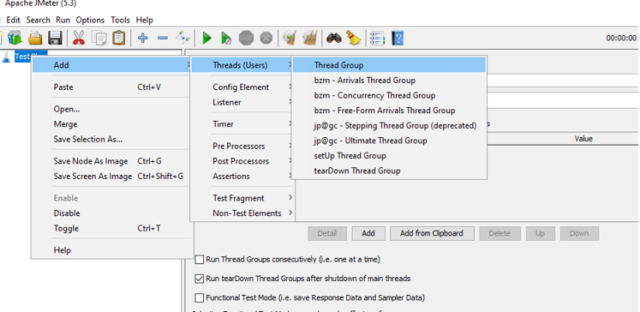
- Then you have to add HTTP Request. Right-click on Thread Group, select Sampler, and add HTTP Request.
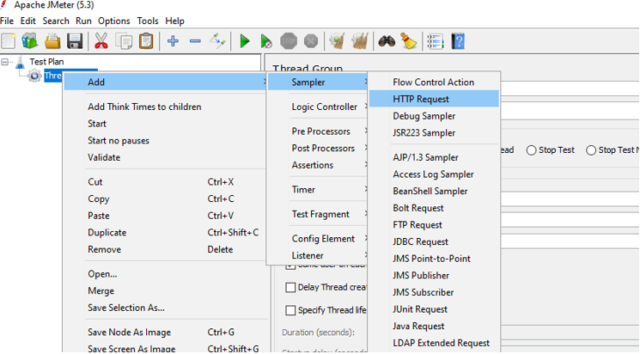
- Next, you can search for REST APIs that are freely available on the internet.
Here, I have taken the example of https://reqres.in/ for reference.
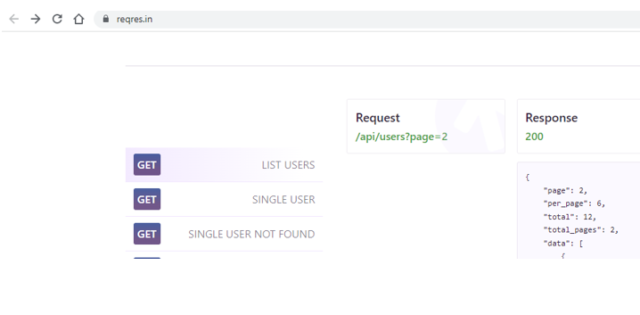
- Once you have the API, find out the server name, path, and parameters from the link. Copy the values in the HTTP Request of the JMeter Test Plan. Url: https://reqres.in/api/users?page=2

- Now, add a Listener to view the results of your Test. Right-click on Thread Group, select Listeners and add View Results Tree.

- Now Save the test (.jmx) and Run it. You can increase the Number of Threads in order to increase the Load on your API. Here, I have taken 10 users.
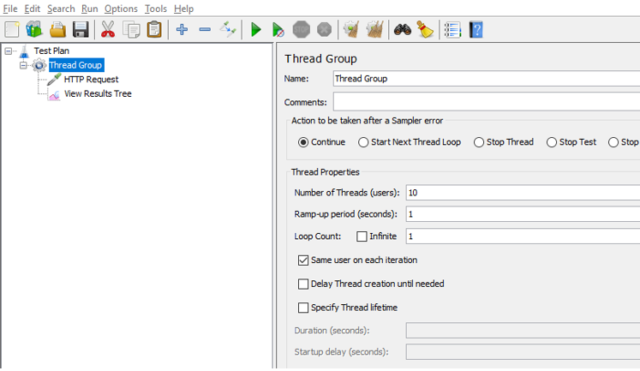
After running the test, it’s time to check the results. Go to the View Results Tree.
If the response code is 200, it means that the test was run successfully, and green status shows that the test was successful.
Viewing Results in JMeter
In JMeter, results can be viewed using Listeners. JMeter listeners allow viewing the results in various formats like Tables, Trees, Graphs, Logs, etc.
In the picture below, the Sampler result tab contains the response code, response message, and information about Load time, Connect time, latency, error count, etc.
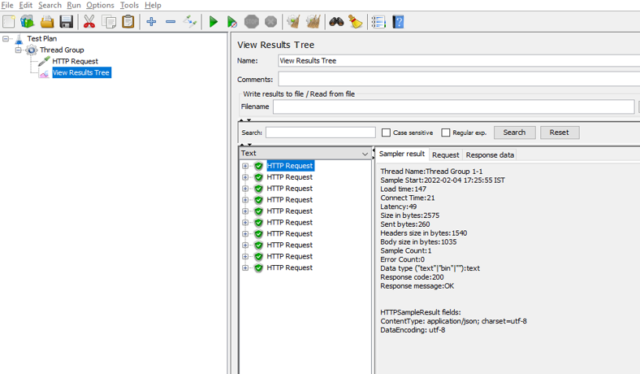
The Test Result will also show the Request data and Response data for the HTTP Request server. Click on Response data to view the response.
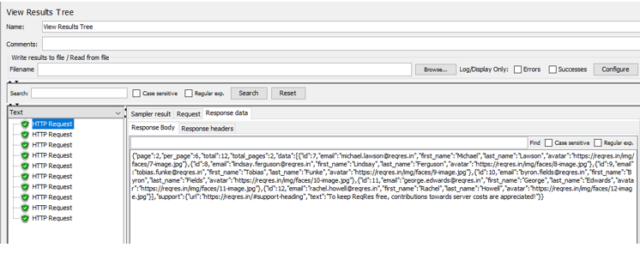
In the same way, we can use POST, PUT, and DELETE requests to Create, Update or Delete.
With these steps, you have successfully completed your API Load Testing.
Throughout this blog, we have explored API load testing with JMeter, learning how to set up test plans and analyze test results. We’ve seen how JMeter empowers us to simulate various scenarios, including load and stress testing, to ensure that APIs can handle real-world challenges.
By incorporating JMeter into your testing arsenal, you can elevate the quality of your APIs and confidently deliver robust and reliable software solutions to end users. Remember to continuously improve your API test cases, and leverage JMeter’s flexibility to adapt to evolving requirements.
In conclusion, JMeter is an asset for API testing, allowing testers to identify issues early in the development cycle and ultimately deliver high-performing and flawless APIs to users. So, equip yourself with the knowledge gained from this blog and embark on your API testing adventure with confidence! Happy testing!

